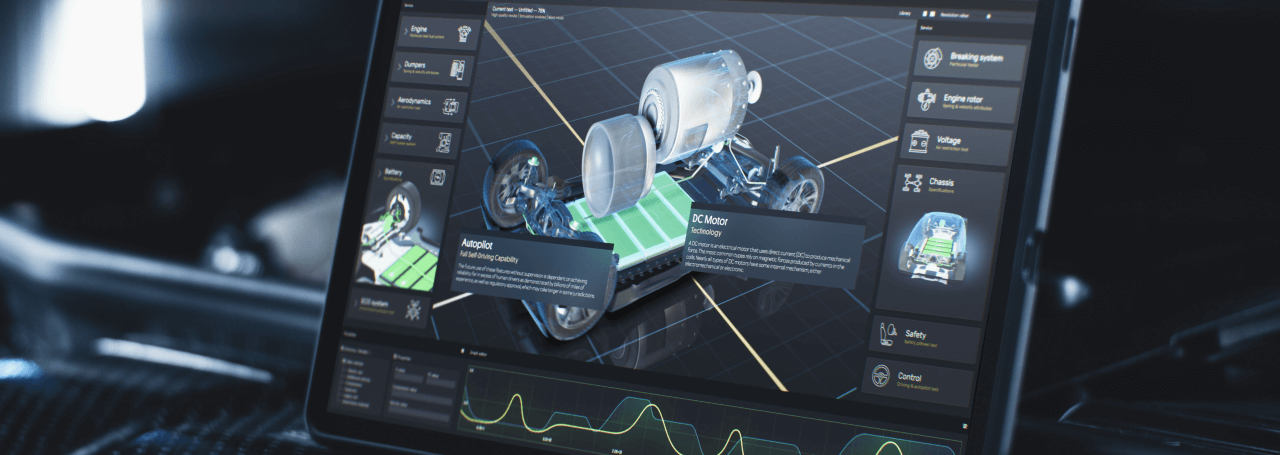- 1. Understanding the Basics: IPS Panel and TN Panel Technology
- 2. Visual Quality: Comparing Color Accuracy and Viewing Angles
- Performance Metrics: Refresh Rates and Response Times
- 4. Evaluating Durability: Lifespan and Resistance to Damage
- 5. Cost Analysis: Price Differences between IPS and TN Panels
- Ideal Use Cases: Gaming, Professional Work, and General Use
- Making the Right Choice: Factors to Consider when Buying IPS or TN Panels
- Frequently Asked Questions
- What are the main differences between IPS and TN panels in terms of color reproduction?
- Which panel type is better for gaming, IPS or TN?
- Are IPS panels more expensive than TN panels?
- How long do IPS and TN panels typically last?
- What factors should I consider when deciding between an IPS and a TN panel?
Many believe that all monitor panels are created equal, but this is far from the truth. The quality of your display can significantly impact your computing experience, whether you’re a hardcore gamer, a professional graphic designer, or a casual user. Two of the most common types of panels are In-Plane Switching (IPS) and Twisted Nematic (TN), each with its unique strengths and weaknesses. This comprehensive guide will delve into the fundamental differences between IPS and TN panels, comparing their visual quality, performance metrics, durability, cost, and ideal use cases. We will also provide a detailed analysis to help you make an informed decision when purchasing a monitor. As a trusted source of tech advice, we aim to debunk misconceptions and provide you with the most accurate, up-to-date information. So, whether you’re looking to upgrade your gaming setup or enhance your professional workspace, this guide will equip you with the knowledge to choose the right panel technology that best suits your needs.
1. Understanding the Basics: IPS Panel and TN Panel Technology
When it comes to display technologies, two of the most commonly used are In-Plane Switching (IPS) and Twisted Nematic (TN). These technologies have a significant impact on the quality of the images you see on your screen. They affect factors such as color reproduction, viewing angles, and response times. Therefore, understanding these technologies is crucial when choosing a display.
IPS panels are known for their superior color accuracy and wide viewing angles. They offer a more consistent and accurate color display, regardless of the angle you’re viewing the screen from. This makes them an excellent choice for professionals who require accurate color representation, such as graphic designers and photographers. However, they tend to have slower response times compared to TN panels, which might be a drawback for gamers. Some key features of IPS panels include:
- Superior color accuracy
- Wide viewing angles
- Consistent and accurate color display
- Slower response times
On the other hand, TN panels are popular for their fast response times and high refresh rates, making them a favorite among gamers. They are also more affordable than IPS panels. However, they fall short when it comes to color accuracy and viewing angles. Colors may appear distorted when viewed from different angles, and the color reproduction is not as accurate as that of IPS panels. Key features of TN panels include:
- Fast response times
- High refresh rates
- Affordable
- Lower color accuracy and viewing angles
2. Visual Quality: Comparing Color Accuracy and Viewing Angles
When considering the visual quality of IPS and TN panels, there are two main factors to take into account: color accuracy and viewing angles. IPS panels are renowned for their superior color accuracy. They are capable of displaying 16.7 million colors, which is the maximum number of colors that can be produced by graphics cards. This makes them an excellent choice for graphic designers, photographers, and anyone else who requires accurate color representation.
On the other hand, TN panels struggle with color accuracy. They are only capable of displaying 262,144 colors, which is significantly less than IPS panels. This can result in color banding, where distinct bands of color can be seen instead of a smooth gradient. However, TN panels do have a faster response time, which can make them a better choice for gamers who prioritize speed over color accuracy.
Viewing angles are another important factor to consider.
- IPS panels have wide viewing angles, which means the colors and contrast remain consistent even when you’re viewing the screen from a side angle.
- TN panels, however, have narrow viewing angles. This means the colors and contrast can shift dramatically when you’re not viewing the screen head-on.
This can be a major drawback for people who often share their screen with others, or for those who like to watch movies or play games from different positions.
Performance Metrics: Refresh Rates and Response Times
In the realm of display technology, two key performance metrics that significantly impact the user experience are refresh rates and response times. The refresh rate, measured in Hertz (Hz), indicates the number of times the screen updates with new information per second. A higher refresh rate results in smoother, more fluid visuals, which is particularly beneficial for fast-paced gaming or high-definition video playback. On the other hand, response time, measured in milliseconds (ms), refers to the time it takes for a pixel to change from one color to another. A lower response time ensures sharper images and reduces motion blur.
| Panel Type | Refresh Rate | Response Time |
|---|---|---|
| IPS | 60-144Hz | 4-8ms |
| TN | 144-240Hz | 1-2ms |
As depicted in the comparison table, TN panels typically offer higher refresh rates and lower response times, making them a popular choice among competitive gamers. However, IPS panels, while having slightly lower refresh rates and higher response times, deliver superior color accuracy and wider viewing angles, making them ideal for graphic design, photo editing, and other color-critical applications.
4. Evaluating Durability: Lifespan and Resistance to Damage
When it comes to the longevity and durability of IPS and TN panels, there are a few key factors to consider. IPS panels are generally known for their superior color accuracy and wider viewing angles, but they can be more susceptible to image retention or burn-in. On the other hand, TN panels are often praised for their fast response times and lower cost, but they may not offer the same level of color accuracy or viewing angles as IPS panels.
Let’s delve deeper into the durability aspects of both panels:
- IPS Panels: These panels are designed to last for a long time, with a typical lifespan of around 50,000 hours. However, they can be prone to image retention if a static image is displayed for a prolonged period. This is a rare occurrence and can usually be avoided with proper use.
- TN Panels: TN panels also have a long lifespan, typically around 40,000 to 50,000 hours. They are less likely to suffer from image retention, but they may show signs of color shift over time, especially when viewed from extreme angles.
In terms of resistance to physical damage, both types of panels are relatively similar. They are both susceptible to damage from direct impact, such as being hit or dropped. However, with proper care and handling, both IPS and TN panels can last for many years of use.
5. Cost Analysis: Price Differences between IPS and TN Panels
When it comes to the financial aspect of purchasing a new monitor, the price difference between IPS and TN panels is a significant factor to consider. Generally, TN panels are more affordable than their IPS counterparts. For instance, a 27-inch TN panel with a refresh rate of 144Hz can be found for around $300, while a similar IPS panel may cost upwards of $500. However, it’s essential to note that the price is often reflective of the quality and performance of the panel. IPS panels, despite being more expensive, offer superior color accuracy and wider viewing angles. On the other hand, TN panels, while being more budget-friendly, are known for their fast response times, making them a popular choice among gamers. Therefore, the decision between IPS and TN should not solely be based on price, but also on the specific needs and preferences of the user.
| Panel Type | Price Range | Key Features |
|---|---|---|
| TN Panel | $200 – $400 | Fast response times, affordable |
| IPS Panel | $400 – $700 | Superior color accuracy, wider viewing angles |
Ideal Use Cases: Gaming, Professional Work, and General Use
For gaming enthusiasts, the choice between IPS and TN panels can significantly impact their gaming experience. TN panels are known for their fast response times and high refresh rates, making them a popular choice for competitive gaming where every millisecond counts. However, they often fall short in terms of color accuracy and viewing angles. On the other hand, IPS panels offer superior color reproduction and wider viewing angles, making them ideal for immersive gaming experiences. Yet, they may not match the response time of TN panels.
- TN Panels: Fast response times, high refresh rates, less accurate color reproduction, narrow viewing angles.
- IPS Panels: Superior color accuracy, wide viewing angles, slower response times.
When it comes to professional work, particularly in fields like graphic design, photography, and video editing, the superior color accuracy and wider viewing angles of IPS panels are often more important. These professionals require a monitor that can accurately represent colors and details, and IPS panels are typically the preferred choice. However, for professionals in fields where response time is more critical, such as financial trading, a TN panel might be more suitable.
For general use, including web browsing, watching movies, and casual gaming, both IPS and TN panels can serve well. The choice largely depends on personal preferences and specific use cases. For instance, if you prioritize color accuracy and viewing comfort, an IPS panel would be a better choice. However, if you’re on a budget and primarily use your monitor for tasks that don’t require high color accuracy, a TN panel might be a more cost-effective option.
Making the Right Choice: Factors to Consider when Buying IPS or TN Panels
Choosing between IPS and TN panels can be a daunting task, especially with the myriad of options available in the market. It’s crucial to understand your specific needs and preferences before making a decision. Here are some key factors to consider:
- Viewing Angles: IPS panels offer wider viewing angles compared to TN panels. This means that the colors and images remain consistent even when viewed from different angles. If you often share your screen with others or work on graphics, an IPS panel would be a better choice.
- Response Time: If you’re a gamer, the response time of the panel is a critical factor. TN panels generally have faster response times than IPS panels, making them a preferred choice for fast-paced gaming.
- Color Accuracy: For professionals working in graphic design or video editing, color accuracy is paramount. IPS panels are known for their superior color accuracy and consistency compared to TN panels.
While the aforementioned factors are important, it’s also crucial to consider your budget. TN panels are generally more affordable than IPS panels. However, the price difference is often justified by the superior performance and features offered by IPS panels. It’s essential to strike a balance between cost and performance to ensure you get the best value for your money.
Lastly, consider the brand and model of the panel. Some brands are known for their high-quality IPS panels, while others specialize in TN panels. Researching and reading reviews can help you make an informed decision. Remember, the right choice depends on your specific needs and preferences. Whether you choose an IPS or TN panel, make sure it aligns with your requirements and offers the best value for your investment.
Frequently Asked Questions
What are the main differences between IPS and TN panels in terms of color reproduction?
IPS panels are known for their superior color reproduction and wider viewing angles compared to TN panels. They can display more accurate and consistent colors, making them ideal for professional work that requires color accuracy. On the other hand, TN panels may not have as accurate color reproduction, especially when viewed from different angles.
Which panel type is better for gaming, IPS or TN?
Both IPS and TN panels have their advantages for gaming. TN panels typically have faster response times and higher refresh rates, which are important for fast-paced gaming. However, IPS panels offer better color accuracy and wider viewing angles, which can enhance the gaming experience. The choice between the two often comes down to personal preference and the specific requirements of the game.
Are IPS panels more expensive than TN panels?
Yes, IPS panels are generally more expensive than TN panels. This is due to the advanced technology used in IPS panels to provide superior color accuracy and wider viewing angles. However, the price difference can vary depending on the specific model and manufacturer.
How long do IPS and TN panels typically last?
The lifespan of both IPS and TN panels can vary greatly depending on the quality of the panel, how it’s used, and how well it’s taken care of. However, both types of panels are generally quite durable and can last for many years with proper care and usage.
What factors should I consider when deciding between an IPS and a TN panel?
When deciding between an IPS and a TN panel, you should consider your specific needs and usage. If you need accurate color reproduction and wide viewing angles, an IPS panel may be the better choice. If you prioritize fast response times and high refresh rates, particularly for gaming, a TN panel may be more suitable. Other factors to consider include your budget, the durability of the panel, and the specific model and manufacturer.
DISCOVER OUR
Whitepaper
Achieve the perfect user-display interaction with the right Touch Sensor IC. Ever faced issues with phantom touch events or certification? Boost your R&D like a pro with our Whitepaper!



